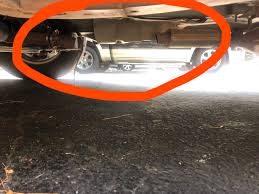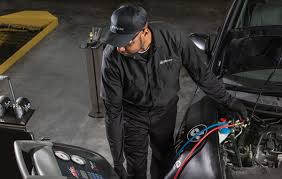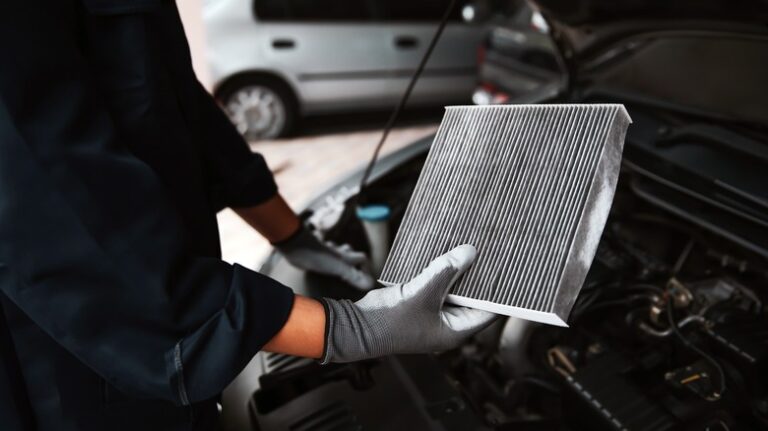Will Low Tire Pressure Light Fail Inspection?

When preparing for your car’s annual inspection, many drivers wonder if certain warning lights, such as the low tire pressure light, can cause their vehicle to fail. The low tire pressure light is a warning signal that indicates your tires may not have the proper air pressure, which can affect the vehicle’s performance, fuel efficiency, and safety. But does this light have an impact on passing your inspection? Let’s explore whether a low tire pressure light can lead to a failed inspection and how you can address the issue.
How the Low Tire Pressure Light Works
The low tire pressure warning light comes on when one or more tires are significantly underinflated. Most modern vehicles are equipped with a Tire Pressure Monitoring System (TPMS), which monitors the air pressure inside the tires. When a tire’s pressure drops below a certain threshold, the TPMS will trigger the low tire pressure light on your dashboard.
Key Points about TPMS:
- TPMS sensors track tire pressure and notify you when it is low.
- The light will typically turn off when tire pressure is corrected.
- The light may blink for a few seconds or stay on continuously, depending on the system’s status.
Will the Low Tire Pressure Light Fail a Car Inspection?
In most cases, yes, the low tire pressure light can cause a failure in the inspection process. Here’s why:
1. Safety Concerns
Tires are a crucial part of your vehicle’s safety, affecting handling, braking, and stability. Low tire pressure can make your tires more prone to wear, increase the risk of tire blowouts, and reduce overall road grip. Inspections focus on ensuring that your vehicle is safe to operate, and issues like low tire pressure can raise concerns about your vehicle’s roadworthiness.
2. Inspection Regulations
In many states and regions, the TPMS light is considered an important part of vehicle safety compliance. If the light is illuminated during the inspection, it may be interpreted as a failure to meet the necessary safety standards.
3. Required Functioning TPMS
Some inspections will test the functionality of the TPMS system itself. If the system is malfunctioning, either due to sensor failure or other issues, the light may stay on even if the tire pressures are fine. In such cases, a faulty TPMS system may lead to a failed inspection.
What to Do if the Low Tire Pressure Light is On
If your low tire pressure light is on and you need to pass an inspection, here’s what you should do:
1. Check Tire Pressure
First, check the tire pressure in all four tires using a tire pressure gauge. If any tire is underinflated, add air to bring the pressure to the recommended level. Most vehicles will have the recommended tire pressure listed on a label inside the driver’s side door frame or in the owner’s manual.
2. Reset the TPMS
After inflating the tires to the correct pressure, the light should turn off. However, some vehicles may require you to manually reset the TPMS. This process varies by make and model, but typically involves:
- Turning the ignition to the “on” position (without starting the engine).
- Holding down the TPMS reset button (often located under the dashboard or near the steering wheel) until the light blinks or goes out.
3. Inspect for Leaks or Damaged Tires
If the tire pressure seems fine but the light remains on, there could be a slow leak, or one of the TPMS sensors may be malfunctioning. Inspect your tires for punctures or damage, and if necessary, have a professional check the system for faulty sensors.
4. Replace the TPMS Sensors
If the light stays on after correcting the tire pressure and resetting the system, it could be an indication of a faulty sensor. In this case, the sensors may need to be replaced, which typically requires a visit to a mechanic or tire shop.
Additional Considerations for Inspection
1. Tire Condition
While the low tire pressure light is a potential reason for failure, tire condition also plays a significant role in passing your inspection. Inspect your tires for:
- Worn-out tread
- Cracks or bulges in the sidewalls
- Punctures or other damage
If any of these issues are present, you may need to replace your tires to pass the inspection.
2. Functionality of the TPMS
Some states or countries require the TPMS to be in good working condition. If your system is broken, it may trigger the low tire pressure light, even if the tire pressures are correct. In such cases, the TPMS may need to be repaired or replaced to pass inspection.
Conclusion
Yes, the low tire pressure light can cause your car to fail an inspection. It typically signals a safety issue related to tire pressure, and inspection stations may not pass vehicles with illuminated warning lights. The good news is that it’s often an easy fix — simply check and correct the tire pressure, reset the system, and ensure your tires are in good condition. If the light remains on, however, further investigation into the TPMS system or the tires themselves may be necessary.
FAQs
1. Can I drive with the low tire pressure light on?
- It’s not advisable to drive with the low tire pressure light on, as low pressure can reduce the performance and safety of your tires.
2. How do I know if my TPMS is faulty?
- If your tire pressures are fine but the light remains on or blinks, it may indicate a malfunction in the TPMS sensors or system.
3. Will filling my tires with air always fix the light?
- If the light is due to low tire pressure, filling the tires with air should turn off the light. If the light stays on, check for leaks or sensor issues.
4. Can I still drive to the inspection station with low tire pressure?
- You should address the low tire pressure before going for the inspection to avoid failure. Driving with underinflated tires can be dangerous.
5. How often should I check tire pressure?
- It’s recommended to check your tire pressure at least once a month and before long trips to ensure they are properly inflated.





